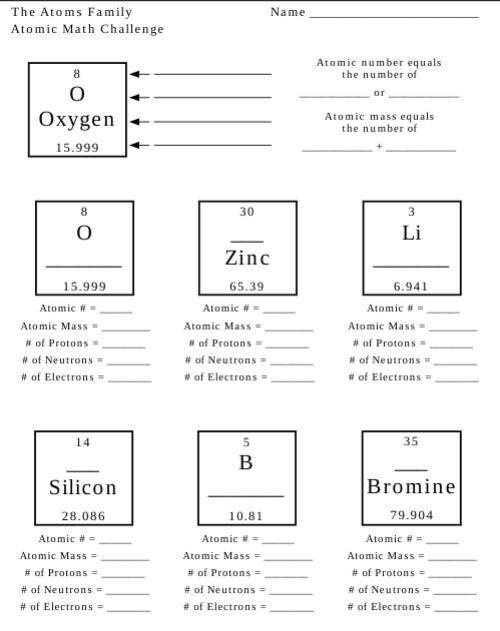
Physics, 06.03.2021 06:40 HyperT1676
Plz help, its an emergency, giving lots of points for it. and srry if its in the wrong subject, not really sure? I just don't understand it at all, it's about atoms and all that stuff.


Answers: 2


Another question on Physics

Physics, 21.06.2019 18:10
Achild throws a ball with an initial speed of 8.00 m/s at an angle of 40.0° above the horizontal. the ball leaves her hand 1.00 m above the ground. how long is the ball in flight before it hits the ground?
Answers: 1

Physics, 21.06.2019 22:50
An electron and a proton have the same kinetic energy upon entering a region of constant magnetic field and their velocity vectors are perpendicular to the magnetic field. suppose the magnetic field is strong enough to allow the particles to circle in the field. note: you'll need to look up the masses for an electron and proton. 1) what is the ratio of the radii of their circular paths rp/re?
Answers: 3

Physics, 21.06.2019 23:00
Follow these directions and answer the questions. 1. set up the ripple tank as in previous investigations. 2. bend the rubber tube to form a "concave mirror" and place in the ripple tank. the water level must be below the top of the hose. 3. generate a few straight pulses with the dowel and observe the reflected waves. do the waves focus (come together) upon reflection? can you locate the place where the waves meet? 4. touch the water surface where the waves converged. what happens to the reflected wave? 5. move your finger twice that distance from the hose (2f = c of c, center of the curvature) and touch the water again. does the image (the reflected wave) appear in the same location (c of c)? you may have to experiment before you find the exact location. sometimes it is hard to visualize with the ripple tank because the waves move so quickly. likewise, it is impossible to "see" light waves because they have such small wavelengths and move at the speed of light. however, both are examples of transverse waves and behave in the same way when a parallel wave fronts hit a curved surface.
Answers: 1

Physics, 22.06.2019 01:30
Use the frequency histogram to complete the following parts. ​(a) identify the class with the​ greatest, and the class with the​ least, relative frequency. ​(b) estimate the greatest and least relative frequencies. ​(c) describe any patterns with the data. female fibula lengths 30.5 31.5 32.5 33.5 34.5 35.5 36.5 37.5 38.5 39.5 0 0.05 0.1 0.15 0.2 0.25 length (in centimeters) relative frequency a histogram titled "female fibula lengths" has a horizontal axis labeled "length in centimeters" from 30.5 to 39.5 in increments of 1 and a vertical axis labeled "relative frequency" from 0 to 0.25 in increments of 0.05. the histogram contains vertical bars of width 1, where one vertical bar is centered over each of the horizontal axis tick marks. the approximate heights of the vertical bars are listed as follows, where the label is listed first and the approximate height is listed second: 30.5, 0.02; 31.5, 0.04; 32.5, 0.05; 33.5, 0.13; 34.5, 0.22; 35.5, 0.25; 36.5, 0.13; 37.5, 0.06; 38.5, 0.09; 39.5, 0.01. ​(a) the class with the greatest relative frequency is nothing to nothing centimeters. ​(type integers or decimals. do not round. use ascending​ order.)
Answers: 3
You know the right answer?
Plz help, its an emergency, giving lots of points for it. and srry if its in the wrong subject, not...
Questions

Social Studies, 26.06.2020 16:01


Mathematics, 26.06.2020 16:01






History, 26.06.2020 16:01

Mathematics, 26.06.2020 16:01





History, 26.06.2020 16:01

Business, 26.06.2020 16:01


Mathematics, 26.06.2020 16:01


Mathematics, 26.06.2020 16:01



